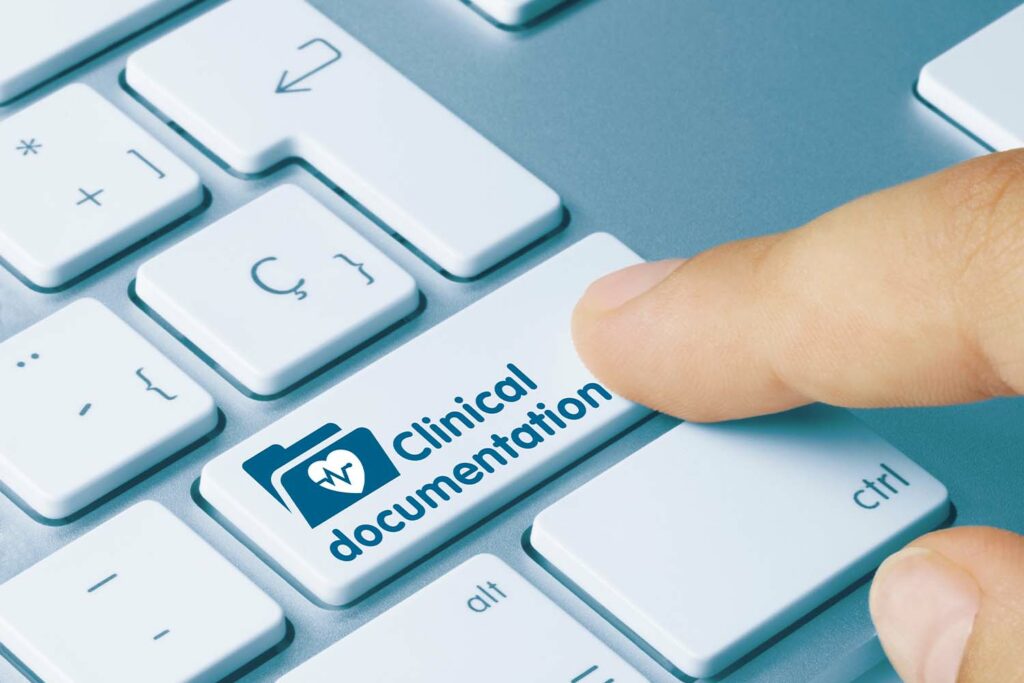
The collection and quality of data are at the heart of conducting a clinical trial, which can ultimately affect patient healthcare in the long run. Clinical data management (CDM) is a vital aspect of clinical research and is essential for complying with regulatory processes.
Through efficient and well-organized CDM processes, researchers can gather and assess high-quality data to accurately evaluate drug treatments. New drug development procedures can be fast-tracked to positively impact patient health needs and meet the demand of the pharmaceutical industry.
Quality CDM is not only a matter of abiding by ethical standards. The right data management processes influence the quality of clinical trial data, which can lay the groundwork for ultimately influencing treatment and medical device decisions and therapeutic guidelines. Therefore, a clinical study should have the appropriate CDM processes in place to promote streamlined, high-caliber clinical outcomes.
Continue reading to learn more about the importance and core features of quality clinical data management.
Standards of CDM
Much of CDM processes have become standardized according to best practice guidelines. Previously, clinical data collection was performed through paper-based methods. However, the collection of clinical data is typically carried out with the aid of technology in this day and age.
Electronic data capture (EDC) systems allow for the input of clinical data into computerized systems in a fast and efficient manner. The use of EDC systems can promote the accuracy of data collection and can include a validation process for verifying user-inputted data.
Electronic records must comply with the Code of Federal Regulations (CFR), 21 CFR Part 11. This code applies to all electronically recorded records. 21 CFR part 11-compliant EDC systems should be validated to promote the accuracy, consistency, and reliability of data.
Researchers will be able to track data entries and create an audit trail, which makes it easy to monitor user data entries and actions to ensure that the records remain confidential and authentic.
Regulatory audits may request to verify data discrepancies and the processes put in place to track or prevent such discrepancies. CDM tools and software are available to create and manage large databases for clinical trials, and many of them have several features to help researchers comply with regulations.
Research organizations should seek to follow the Good Clinical Data Management Practices (GCDMP) guidelines published by the Society for Clinical Data Management (SCDM). The GCDMP provides guidance on the best practices for collecting and maintaining high-quality data.
For example, the GCDMP advises researchers to clarify important data points and standardize their data collection processes to reduce the variability of clinical data. The GCDMP guidelines can also help organizations comply with regulatory standards.
Utilizing Key Team Members
Delegating and having the right key members for performing quality CDM processes is paramount for the success of clinical trials. The CDM team members have specific roles and responsibilities for ensuring quality data management.
The CDM team members can be outlined as follows:
- Data manager
- Clinical data coordinator
- Database programmer or designer
- Medical coder
- Data entry associate
- Quality control associate
Filling these key roles is important for quality CDM processes. You should choose the team members based on their specific qualities and educational background. For example, CDM team members should have a science background and adequate knowledge of computer operating systems.
Data Manager
The data manager will oversee the entirety of the CDM process and prepare the Data Management Plan (DMP). The data manager will also supervise and approve database access by team members. Another responsibility of the data manager is to oversee and approve all internal documents related to the CDM activities.
Clinical Data Coordinator
The clinical data coordinator or clinical data associate is responsible for designing the Case Report Form (CRF), preparing the filing instructions for the CRF, and developing the Data Validation Plan (DVP) and discrepancy management plan. The clinical data coordinator uses project management skills to manage and prepare all CDM-related documents, checklists, and guideline documents.
Database Programmer or Designer
The database programmer or designer carries out the CRF annotation, develops the study database, and creates the edit checks for data validation. In addition, they are responsible for designing the data entry screens in the database and verifying the edit checks with dummy data.
Medical Coder
The medical coder is responsible for coding the medical history, comorbidities, adverse events, and concomitant medications administered during the study. The medical coder assigns specific codes for diagnoses and procedures with the use of codes, such as those determined by the ICD (International Classification of Diseases) and CPT (Current Procedural Terminology).
Data Entry Associate
The data entry associate primarily works in the databases, performing data entry and tracking the receipt of CRF pages. The data entry associate may also be in charge of optimizing ways to store, update, manage, and organize clinical trial data in the database. In addition, they might troubleshoot any problems related to entering data into the database to improve overall workflow.
Quality Control Associate
The quality control associate is responsible for checking the accuracy of data entry and conducting data audits. They may also verify any documentation related to the CDM process procedures. In some cases, a separate quality assurance associate may conduct an audit on the clinical research data entered into the database.
Following the Right Systems and Processes
The CDM process should be carried out in accordance with regulatory requirements and any relevant standard operating procedures (SOPs). It begins with the right clinical trial management system (CTMS).
Having a clearly defined, standardized process can help prevent inconsistencies and ensure a valid, error-free database. The CDM process should start with the end in mind and before the study protocol is finalized.
Data Collection
Electronic CRF methods to collect data are optimal for quality CDM. The risk of errors is reduced with an electronic format, as it allows for an easier resolution of discrepancies. Using an electronic CRF method also helps streamline data collection and may help reduce the time it takes to carry out clinical trials for drug development.
Data Entry
The DMP, prepared by the data manager, typically outlines the procedures for data entry. Especially in the case of paper CRF methods, double data entry can be a useful practice for the verification and reconciliation of clinical data input. Double data entry involves the entry of data by two people.
Data Validation
Based on the protocol specifications, the validity of study data can be evaluated through data validation processes. Incorrectly entered data can cause problems that require more resources to resolve.
Data validation can help prevent inconsistencies in data and ensure the entry of high-quality, accurate data. It may include the use of edit check programs that identify discrepancies in any entered data and provide a layer of quality control.
Discrepancies, which are data points that do not pass validation checks, can be caused by inconsistent data, protocol deviations, and missing data, among other causes. Discrepancies may be monitored and resolved by a CDM team member.
Discrepancy Management
Also known as query resolution, discrepancy management involves reviewing system-generated discrepancies, learning the root cause of the discrepancy, and resolving the discrepancy with documentary proof or declaring the discrepancy as unresolvable.
Discrepancy management is one of the most critical parts of clinical data management. Discrepancy management helps clean the clinical data and gathers sufficient evidence to explain deviations in the data.
Clinical Data Management Systems (CDMS) should have a database of discrepancies to document and store discrepancies with an audit trail. Discrepancies are typically highlighted in the system through the generation of Data Clarification Forms (DCFs). These DCFs consist of queries related to the found discrepancy.
Discrepancies are usually flagged to be clarified by an investigator. The investigator can then resolve the discrepancy and explain the processes or situations that lead to the discrepancy. Once a discrepancy is resolved, the data can be updated in the database if needed. Discrepancies that are unable to be resolved should be marked as such.
Database Locking
In tandem with data quality control processes, database locking limits changes to the data and ensures the database remains clean. Database locking is conducted after a final quality check and assurance on the data. If no discrepancies are found with the final data validation process, the data is finalized in the database. Before performing the database lock, a CDM activity checklist should be completed to ensure all critical activities have been handled.
Locking the database may require approval from designated stakeholders. After the database is locked, no further changes can be made to the data. However, in some cases involving serious issues, users with special privileges may be able to modify the data. If changes are made to the database after locking, the appropriate documentation should be recorded with an audit trail. Once the database is locked, data extraction and data analysis can be performed for statistical analysis.
The Importance of Quality Clinical Data Management
The main goal of quality clinical data management is to ensure the outcomes and conclusions from a clinical trial are supported by high-quality data. Clinical data management processes have evolved to streamline clinical trials in accordance with regulations.
CDM processes have largely become defined with the help of guidelines, technology, and data standards. The clinical data management plan combines the timeline, deliverables, and the strategy roadmap through the whole CDM cycle.
iProcess Is Here To Help
Managing high-quality data from clinical trials also involves the use of high-quality biospecimens and clinical testing. iProcess is a leading global supplier of high-quality biospecimens for various organizations, including pharmaceutical, diagnostic, and research organizations. With high-quality biospecimens, organizations can extract and manage better analytics and conclusions.
Contact us today for more information.
Sources:
CFR – Code of Federal Regulations Title 21 | U.S. Food and Drug Administration




